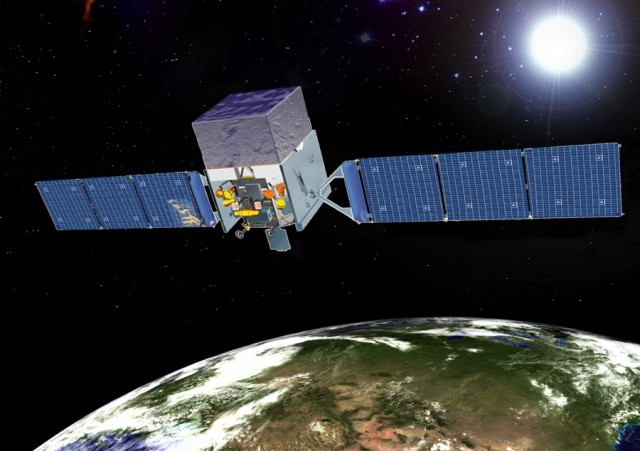
While Fermi is in fine shape today, continuing its mission to map the highest-energy light in the universe, the story of how it sidestepped a potential disaster offers a glimpse at an underappreciated aspect of managing a space mission: orbital traffic control.
As McEnery worked through her inbox, an automatically generated report arrived from NASA’s Robotic Conjunction Assessment Risk Analysis (CARA) team based at NASA’s Goddard Space Flight Center in Greenbelt, Md. On scanning the document, she discovered that Fermi was just one week away from an unusually close encounter with Cosmos 1805, a dead Cold-War era spy satellite.
The two objects, speeding around Earth at thousands of miles an hour in nearly perpendicular orbits, were expected to miss each other by a mere 700 feet.
Although the forecast indicated a close call, satellite operators have learned the hard way that they can’t be too careful. The uncertainties in predicting spacecraft positions a week into the future can be much larger than the distances forecast for their closest approach.
With a speed relative to Fermi of 27,000 mph, a direct hit by the 3,100-pound Cosmos 1805 would release as much energy as two and a half tons of high explosives, destroying both spacecraft.
With a speed relative to Fermi of 27,000 mph, a direct hit by the 3,100-pound Cosmos 1805 would release as much energy as two and a half tons of high explosives, destroying both spacecraft.
Published on Apr 30, 2013
The update on Friday, March 30, indicated that the satellites would occupy the same point in space within 30 milliseconds of each other. Fermi would have to move out of the way if the threat failed to recede. Because Fermi’s thrusters were designed to de-orbit the satellite at the end of its mission, they had never before been used or tested, adding a new source of anxiety for the team.
By Tuesday, April 3, the close approach was certain, and all plans were in place for firing Fermi’s thrusters. Shortly after noon EDT, the spacecraft stopped scanning the sky and oriented itself along its direction of travel. It then parked its solar panels and tucked away its high-gain antenna to protect them from the thruster exhaust.
The maneuver was performed by the spacecraft based on previously developed procedures. Fermi fired all thrusters for one second and was back doing science within the hour.
The maneuver was performed by the spacecraft based on previously developed procedures. Fermi fired all thrusters for one second and was back doing science within the hour.
In 2012, the Goddard CARA team participated in collision-avoidance maneuvers for seven other missions. A month before the Fermi conjunction came to light, Landsat 7 dodged pieces of Fengyun-1C, a Chinese weather satellite deliberately destroyed in 2007 as part of a military test. And in May and October, respectively, NASA’s Aura and CALIPSO Earth-observing satellites took steps to avoid fragments from Cosmos 2251, which in 2009 was involved in the first known satellite-to-satellite collision with Iridium 33.